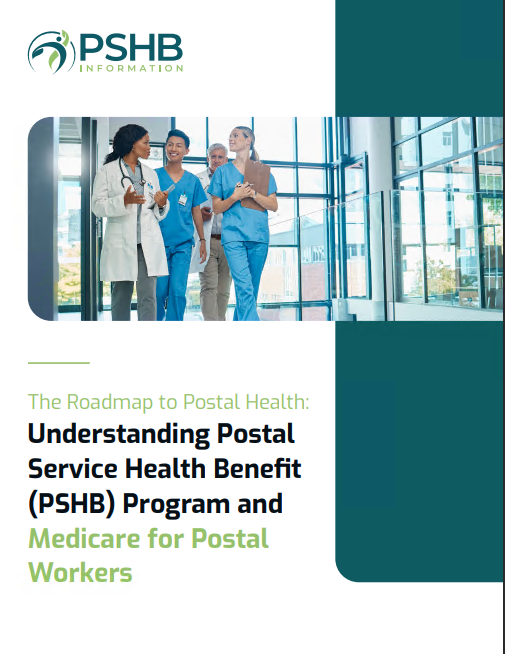Key Takeaways
-
Medicare alone doesn’t cover many of the routine and outpatient services you might assume are included—leaving you responsible for substantial out-of-pocket costs.
-
The Postal Service Health Benefits (PSHB) program can significantly help fill these gaps, especially for services Medicare either partially covers or doesn’t cover at all.
Medicare Is Designed to Do a Lot—But Not Everything
If you’re enrolled in Medicare, it’s natural to feel like you have the essentials covered. After all, it provides broad coverage for inpatient hospital care, medically necessary services, and prescription drug access. However, that coverage is not absolute.
The problem becomes clear the moment you step outside the hospital. Many services you may need day-to-day fall outside Medicare’s full coverage scope.
In 2025, the standard Medicare package still consists of:
-
Part A (Hospital Insurance): Covers inpatient hospital stays, skilled nursing facilities (under specific conditions), hospice, and limited home health care.
-
Part B (Medical Insurance): Covers doctor visits, outpatient care, preventive services, and durable medical equipment.
-
Part D (Prescription Drug Coverage): Covers outpatient prescription drugs.
Yet even with all three parts, significant gaps remain. Understanding what those are helps you avoid costly surprises.
The Problem With Outpatient Care
One of the most misunderstood areas of Medicare is how outpatient services are handled.
While Part B covers outpatient services, it only pays 80% of approved charges after you meet the $257 annual deductible. That 20% coinsurance might sound manageable, but when dealing with frequent visits, specialist care, or medical equipment, it can quickly become overwhelming.
For instance:
-
Chemotherapy and radiation treatments are outpatient.
-
Diagnostic imaging like MRIs, CT scans, and lab work often fall under Part B.
-
Physical therapy and occupational therapy are also under Part B.
If you require regular outpatient services, your financial responsibility adds up. Medicare doesn’t cap your annual out-of-pocket expenses either—there is no maximum limit on what you could end up paying.
The Hidden Cost of Routine Services
There are many day-to-day healthcare needs that simply aren’t covered by Medicare at all. These include:
-
Routine dental care, cleanings, and dentures
-
Eye exams for eyeglasses
-
Hearing aids and associated exams
-
Most foot care (except when medically necessary)
-
Long-term custodial care, such as help with bathing, dressing, or eating
While some PSHB plans may offer limited benefits for dental, vision, and hearing, Medicare generally does not. That means that even though these services are essential to your quality of life as you age, you might have to pay fully out of pocket unless you have PSHB coverage that helps with these categories.
Skipping Coverage Isn’t Worth the Risk
You might consider skipping additional coverage because you’re healthy now. But the issue isn’t just about the big hospital stay. It’s the regular, smaller services you rely on throughout the year that add up:
-
Preventive screenings
-
Specialist consultations
-
Diagnostic testing
-
Mental health outpatient visits
Without proper supplemental coverage, these can slowly drain your savings. And because Medicare Part B has no annual limit, there’s no stopping point if your care needs rise suddenly mid-year.
How PSHB Helps You Outside the Hospital
The Postal Service Health Benefits (PSHB) program, implemented in 2025, is structured to integrate well with Medicare—especially for retired Postal Service annuitants. If you are eligible and enrolled in Medicare Part B, many PSHB plans offer additional financial protections and coverage extensions.
Some of the advantages include:
-
Lower or waived deductibles when combined with Medicare Part B
-
Reduced or eliminated coinsurance for outpatient services
-
Access to expanded networks of specialists and diagnostic centers
-
Comprehensive prescription drug coverage through integrated Part D benefits
-
Additional support for hearing, dental, and vision services, depending on the plan
While not all benefits are identical across plans, PSHB fills critical gaps left by Original Medicare. It can greatly reduce the likelihood of receiving surprise medical bills for everyday health needs.
The Medicare Part D Prescription Landscape in 2025
As of 2025, Medicare Part D has undergone a major improvement: a $2,000 out-of-pocket cap on prescription drug expenses. Once you reach this threshold, your plan pays 100% of covered drug costs for the rest of the year.
Still, you remain responsible for:
-
An annual deductible of up to $590
-
Coinsurance or copayments during the initial coverage phase
PSHB plans that include a Medicare Part D Employer Group Waiver Plan (EGWP) often provide more favorable cost-sharing than standard Part D alone. That can make a major difference if you require brand-name or specialty medications.
What Happens During Skilled Nursing or Rehab?
Medicare Part A covers skilled nursing facility (SNF) care, but only under very strict conditions:
-
A 3-day inpatient hospital stay is required beforehand.
-
Coverage is limited to 100 days per benefit period.
-
After day 20, you owe $209.50 per day in coinsurance (2025 amount).
If you exceed the 100-day limit or don’t meet the conditions for SNF coverage, Medicare stops paying.
PSHB plans can help reduce these costs and often offer more flexible post-acute care coverage—such as coverage for rehabilitation services that exceed Medicare’s narrow definitions.
What About Emergency Room or Urgent Care Visits?
Emergency room visits and urgent care services are usually billed under Part B. You’ll be responsible for 20% of the approved cost after your deductible. For an ER visit that includes tests, imaging, and observation, that 20% quickly adds up.
Some PSHB plans cap these costs, provide fixed copayments, or offer coverage for services that Original Medicare might not recognize as medically necessary but still urgent.
Understanding Your Out-of-Pocket Exposure
The lack of an out-of-pocket cap under Original Medicare means that even one year of high outpatient use could cost you thousands. Let’s break down the kinds of expenses that are most common:
-
Part B coinsurance: 20% of approved services
-
Durable medical equipment: 20% of Medicare-approved amount
-
Lab tests and imaging: Full coinsurance after deductible
-
Preventive services: Some are fully covered, others are partially covered
In contrast, PSHB plans typically include annual out-of-pocket maximums—often in the range of $7,500 for Self Only and $15,000 for Self Plus One or Self and Family. Once you hit that ceiling, your plan pays 100% of covered costs.
Why Relying on Medicare Alone Can Backfire
Without the structure of cost protections, relying solely on Medicare is risky, especially for annuitants. Here’s why:
-
Medicare doesn’t cover custodial long-term care
-
There are strict limits on SNF coverage
-
Preventive and routine care may require out-of-pocket payments
-
Specialist visits, therapy, and outpatient surgery all fall under coinsurance
The lack of a spending ceiling is one of the most concerning features for retirees trying to stick to a fixed income. You might be one diagnostic test or treatment plan away from a cascade of bills.
What You Should Do Right Now
If you are a Postal Service annuitant or employee approaching retirement, make sure you:
-
Review how your PSHB plan coordinates with Medicare Part A and B
-
Check whether your plan offers enhanced benefits for those enrolled in Medicare
-
Understand your deductible, coinsurance, and out-of-pocket maximums
-
Compare what’s covered under Medicare only vs. Medicare plus PSHB
During Open Season, which takes place each year from November to December, you have the opportunity to switch or update your PSHB plan. It’s the best time to ensure you’re choosing coverage that protects you from the risks Medicare alone leaves behind.
Why It Pays to Go Beyond Medicare With PSHB
Relying only on Medicare may feel sufficient until you need services outside the hospital setting. That’s when the gaps become painfully clear—in the form of coinsurance bills, uncovered services, and delayed care.
Pairing Medicare with a strong PSHB plan gives you an added layer of security. It extends your coverage into the areas where Medicare either falters or doesn’t reach at all. That makes a measurable difference in both your healthcare experience and your financial peace of mind.
To get personalized help choosing the right plan, speak with a licensed agent listed on this website for professional advice.








